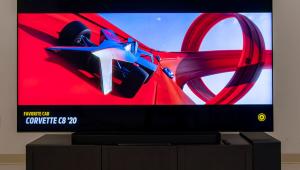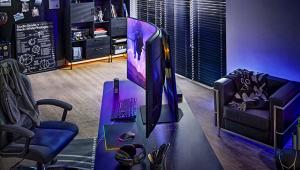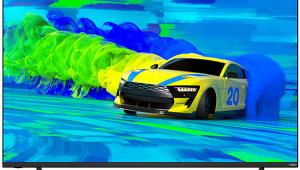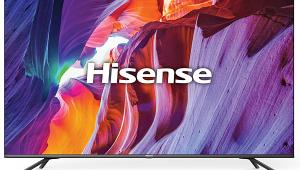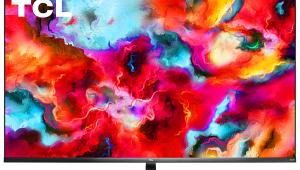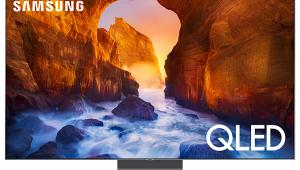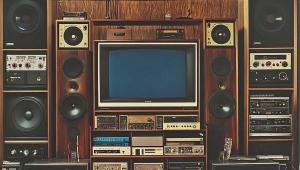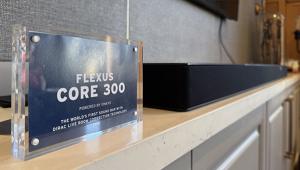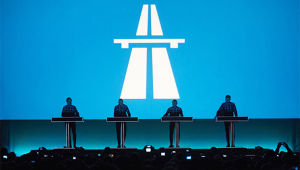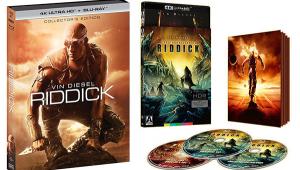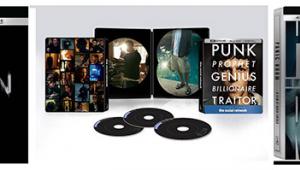Glad I bought the U77L 85" instead of this. Your review, though pretty glowing overall, shows that Sony could, and should, have delivered more at this price point. In fact, I'm glad Hisense is really putting the screws to overcharging for high-performing HDTVS. That said, Sony can obviously charge more for less and probably still sell a lot of TVS. But, why? How about charging more and actually getting a lot more because that is what I expect of Sony. Like I said the more garden-variety LCD tech used in the U77L is my choice, especially in the larger 85" format, due to a really nice balance of size, cost, and performance. Hey Sony, go with more zones and don't cheap out on this crucial part of mini-led tech.
Sony K-65XR90 65-inch Bravia Series 9 4K Mini-LED TV Review

AT A GLANCE
Plus
Very bright
Excellent processing
Automatic calibrated modes
Snappy Google TV interface
ATSC 3.0 NextGen Tuner
Rechargeable Remote
Minus
Small amount of blooming
Sub-OLED-quality off-angle viewing
Only 2 of the 4 HDMI ports are 2.1 compliant
Onboard speakers sound boxy and hollow
THE VERDICT
The Sony K-65XR90 delivers an outstanding, ultra-bright flat-panel display that closely matches the look of high-end Hollywood grading monitors, setting it apart from most TVs on the market. It can also integrate with Sony's optional Bravia 9 Theater Bar, wireless subwoofer, and wireless rear speakers, offering a seamless 360-degree Dolby Atmos/DTS surround sound experience.
This 4K mini-LED series features advanced automatic calibration, allowing streaming services to adjust picture settings automatically. While not inexpensive, the performance level makes it a worthwhile investment for serious home theater enthusiasts.
The Sony 65-inch K-65XR90 Bravia Series 9 4K mini-LED TV offers an exceptionally bright flat-panel display that replicates the movie theater experience as well as any television we've reviewed. It also excels at delivering smooth, clear visuals for live sports and video content.
Sony calls the Bravia Series 9 its flagship 4K mini-LED TV series for 2024, but to be clear, the company considers it one of three Bravia flagship series available this year. Two other series based on alternative display technologies carried over from 2023 remain on the manufacturer's top shelf. These include the A95L 4K QD-OLED series and the Z9K 8K LED LCD TV series. Each is said to offer the best picture quality for its respective technology class. Sony leaves it up to the viewer to decide which technology works best to their eyes and ears.
The Bravia Series 9 was developed to present the aspirational 4000 nits of peak luminance produced by Sony’s newest professional BVM-HX3110 4K dual-cell LCD grading monitor—that has a 31-inch screen costing many thousands of dollars—in a way that preserves the details and color in both bright image highlights and fine dark shadow elements.
Sony said that although the Bravia Series 9’s mini-LED panel might not have as many local dimming zones as some competitive models in the market, the set’s proprietary AI image processing and new "22-bit" mini-LED driver technology deliver the most accurate appearing images you are likely to see on a consumer television.
In our measurements, peak HDR luminance surpassed 2400 nits with all the settings cranked, although with real-world performance that level might get dialed back somewhat in a proper calibration for the room lighting conditions. To the unaided eye, the specular highlights dazzle even in well-lit rooms.
Sony collaborates closely with streaming content distributors, more so than most TV manufacturers, to ensure home viewers experience productions as accurately as possible. Instead of adopting the Ultra HD Alliance’s Filmmaker Mode or HDR10+ dynamic metadata, Sony uses its own processing systems, which it believes deliver more realistic results.
Furthermore, Sony’s Bravia Series 9 TVs give new tools to content producers working with Amazon Prime, Netflix, and Sony’s own “Sony Pictures Core” service that distributes IMAX Enhanced content to control how their content actually appears on these new television screens.
The set also includes the first use of a new automatic Amazon "Prime Calibrated Mode," through which content produced by Amazon Prime filmmakers and video producers is calibrated automatically at the distribution source. The Prime Calibrated Mode joins the similar Netflix Calibrated Mode that Sony has previously introduced for that streamer’s content.
The 65-inch Bravia Series 9 reviewed here is one of five screen sizes in Sony's top 4K mini-LED series. Each size features a different number of mini-LED dimming zones—the 65-inch model, for instance, has over 1,500 zones. However, we anticipate that both standard dynamic range (SDR) and high dynamic range (HDR) performance will be consistent across all screen sizes.
Along with improved picture quality, Sony has focused on enhancing the audio dynamics of the Bravia Series 9 TVs, particularly when paired with the optional Bravia 9 Theater Bar system. For 2024, Sony has expanded the Bravia sub-brand to encompass both its premium TVs and home theater audio products, positioning it as an all-encompassing home theater label.
Sony is also to be commended for continuing to build support for the new NextGen TV over-the-air broadcast tuners in this 4K TV series. This will ensure U.S. viewers can tune in to new advanced TV channels, many of which will stay free of charge, as they become available in your market.
The 65-inch Bravia 9 Series model we review here lists at a $2998 retail price and is joined by a 75-inch ($3498), and an 85-inch ($4798) version.
Design
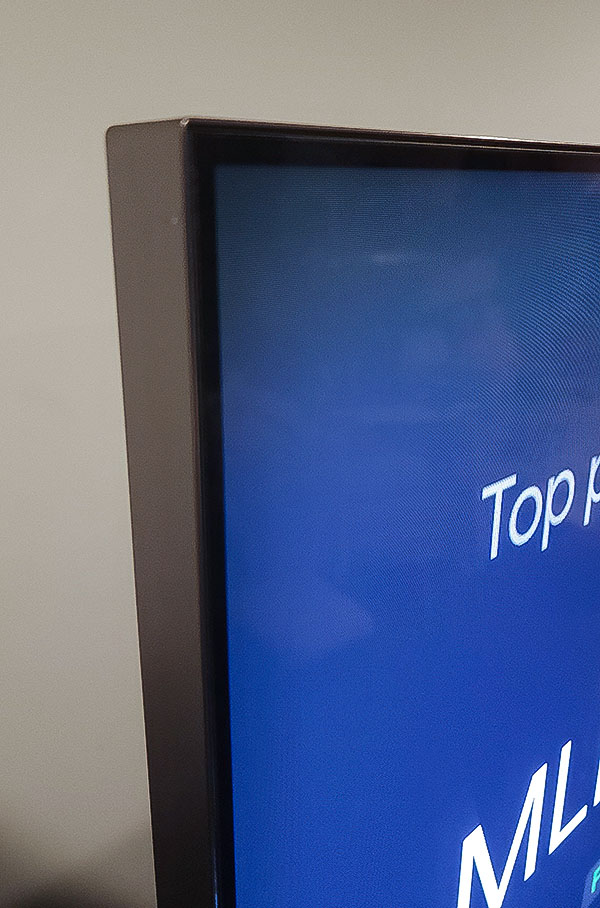
Bezel trim of the Sony Bravia K-65XR90’s “One Slate” design
The look of the television is based on what Sony calls its “One Slate” design. The appearance is sleek and sturdy, featuring a quarter-inch border bezel trim around the screen with a frame depth of just over an inch. The black border edge virtually disappears against the set's deep black screen in dark scenes.
The screen can be mounted with a relatively tight fit against a wall using optional standard VESA mounts, but the set's supplied stand consists of a pair of easily attached feet that nicely provide four-way mounting options to accommodate a range of furniture sizes and soundbar placement options.
When used with a new Bravia 9 Soundbar, for example, one mounting position elevates the screen to just clear the top of the soundbar without any visual intrusion into the picture or interference with the dedicated center channel option when integrating the TV's internal speakers into the multi-channel setup.
If a soundbar is not used, another mounting option allows the screen to be seated almost flat atop a mounting surface.
Remote
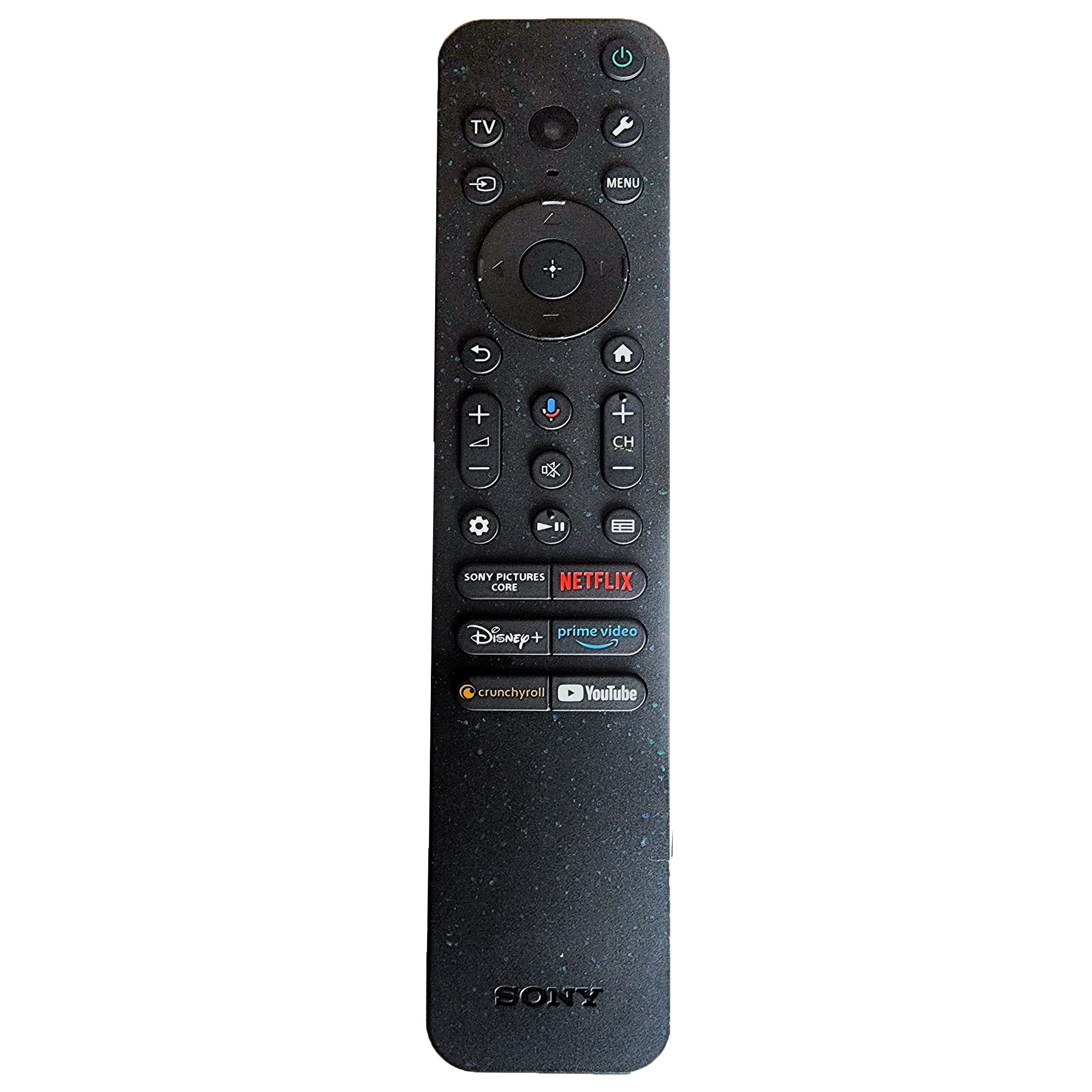
Sony supplies a new handheld Eco-Remote, which incorporates rechargeable batteries with quick charging via a USB-C power connection. The black plastic wand-style remote measures 7 inches long and 1.5 inches wide. The weight provides a little heft for a comfortable fit in the palm and easy one-handed operation.
Nicely, the control buttons are backlit and automatically triggered when picked up or moved. The remote includes six fast-access app buttons supporting the Sony Pictures Core movie channel, Netflix, Disney+, Prime Video, Crunchyroll, and YouTube.
Inputs
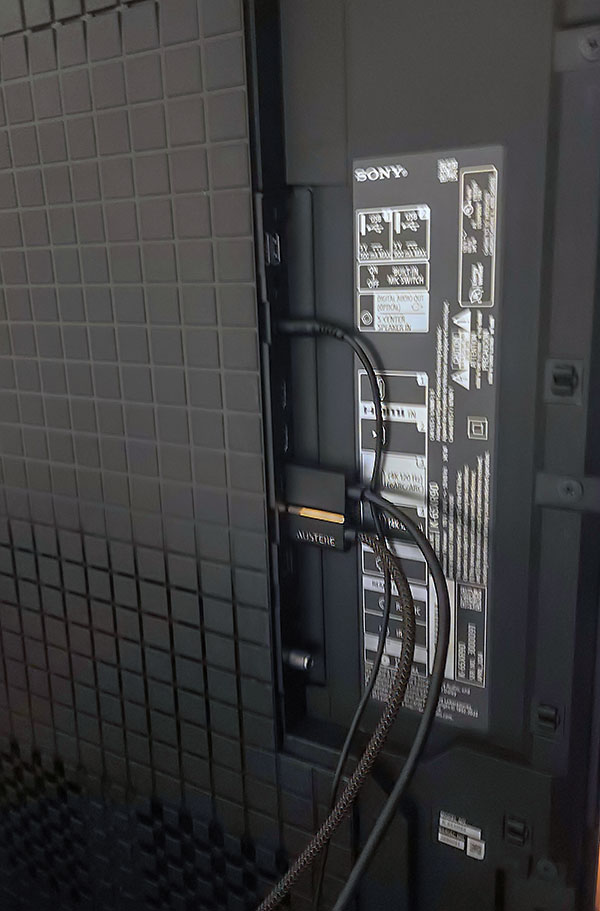
Rear-screen Sony Bravia Series 9 input jack panel.
The Sony Bravia K-65XR90 input panel includes a relatively flexible selection of input connections. These include four HDMI ports, two of which (HDMI 3 and 4) offer full version 2.1 support for up to 4K/120Hz and VRR content; HDMI input 3 also supports e-ARC; HDMI ports 1 and 2 support up to HDMI 2.0b; 2 USB ports; 1 Ethernet port, RF antenna/cable port, 1 Toslink optical digital audio input.
Getting Smarter
The remote efficiently controls the TV’s built-in Google TV smart interface, which comes fully loaded with the most popular streaming service apps, a nice level of customization, and integration support for popular smart home control protocols from Google, Amazon Alexa, and Apple HomeKit.
Users will find support for convenient hands-free voice commands including Google's own Google Assistant and work either through the remote control's built-in mic or the far-field mics in the set.
The platform is compatible with devices via Apple AirPlay 2 and Chromecast built-in. The Google TV platform conveniently monitors the user's viewing preferences to load the home screen with the most pertinent viewing suggestions for the user.
When set, the TV will also engage Auto HDR Tone Mapping and Auto Genre Picture Mode features. It will also auto engage the on-screen game menu for making quick gaming-related adjustments.
Among a healthy list of popular streaming apps, viewers will be able to take advantage of Sony Pictures Core subscription streaming service that delivers Ultra HD Blu-ray-like quality 4K movies including IMAX Enhanced titles with support DTS surround sound that will play nicely on this certified set.
Gaming
As the developer of the popular PlayStation gaming platform, Sony has designed the Bravia Series 9 XR90 to be a powerful gaming-friendly display. Features include support for up to 4K 120Hz titles, VRR, and ALLM, which means the TV can be set to automatically detect when a gaming signal is incoming and automatically trigger Game Mode that optimizes input lag for competitive advantage.
Sony’s Game Menu offers an arsenal of gaming-related adjustments for maximized play. The TV is compatible with Sony's “Perfect for PlayStation 5” promise ensuring the best picture settings for PlayStation 5 titles are automatically engaged upon signal detection.
We measured input lag for a 1080p/60Hz gaming signal of under 18ms, which is very good. Faster frame rates are similarly supported. Unfortunately, the television only includes two HDMI 2.1 ports capable of playing the highest gaming bit rates, and one of those is the eARC port. This means hardcore gamers with all the latest gear may have to manually change connections when multiple advanced gaming devices are available. Most other premium 4K TVs in 2024 offer four full HDMI 2.1 ports.
HDR Throws No Shade
The K-65XR90 supports several High Dynamic Range (HDR) formats: standard HDR10, Dolby Vision, and HLG. Consistent with its previous practice, Sony does not support HDR10+, in favor of its own internal processing. Dynamic metadata signals for that format will automatically play back with very similar high-quality tone mapping and brightness dynamics of Dolby Vision content.
In our testing, we measured the HDR10 peak luminance close to 2400 nits using a 10% D65 white window test pattern with the TV in Cinema picture mode, color temperature set to "Expert 1", Auto Local Dimming turned up high, Advanced Contrast Enhancer set to medium, and HDR Tone Mapping set to “Gradation Preferred.”
The set features more than 1500 local dimming zones that control the thousands of mini-LED backlights, helping to achieve exceptional contrast performance for an LCD-based display.
Measurements were taken with Portrait Display's C6-HDR colorimeter, a Murideo Six-G test pattern generator, and the latest version of Portrait Displays' Calman software.
Note that we used the latest available update of Calman for Bravia AutoCal system to process the SDR color and grayscale to the room lighting condition. This, however, exhibited a few hiccups in the handshake and setup process between the TV and our laptop running the software. The program continually forced the television into HDR mode when trying to perform an SDR grayscale workflow, which is required by Sony as the basis for calibrating both proper SDR and HDR.
Even after forcing the set into HDR, we found the grayscale settings were a little less than accurate, but we were able to set things to our liking manually. We expect this will be adjusted in forthcoming software updates.
The Bravia K-65XR90 was excellent for an LCD-based display in its handling of shadow detail. During the challenging "evil wizard attack" sequence from the 1080p Blu-ray of Harry Potter & the Deathly Hallows Part 2, the often-challenging mist that swirls around the wizard army against the nighttime black mountain backdrop was faintly visible without shifting into an amorphous black blob as it can appear on some weaker LCD screens.
Similarly, during the moving star field test patterns from the Spears & Munsil 4K UHD Blu-ray test disc, stars were displayed with minimal blooming, although some milky clouds were observed around star clusters at brighter luminance levels. Detail crushing was minimal in the deep space background during the opening title sequence of The Martian from the 4K UHD Blu-ray.
While playing content, we observed very little screen glare or reflections of room lights. Off-angle horizontal viewing is nicely wide for an LCD display, though not as wide as OLED levels. Contrast and color fidelity also decrease somewhat at vertical viewing angles, as when standing upright from a seated position. This limitation tends to raise black levels on screen, generating a faint milky blue haze in black backgrounds when overhead lights are turned on above the screen.
Sony uses an anti-glare coating that reduces reflections from the room, but this tends to slightly lift blacks with overhead lights, generating a slight milky blue haze when looking down on the screen from a standing position.
This mostly disappears, however, when seated at eye level to center screen. The set also loses a small amount of contrast when viewing from wide viewing angles, but this is handled better than most LCD screens. In settings where groups of viewers might be watching from different angles, an OLED-type display, like Sony’s excellent A95L QD-OLED series, might be preferred.
Color
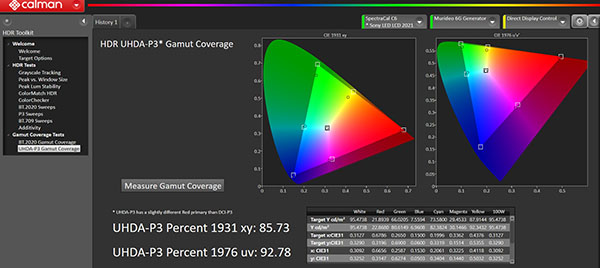
Out-of-box measurement of HDR10 P3 wide color gamut showing 92.78% uv coverage in the Calman Ultra HD evaluation workflow.
The Bravia Series 9 uses a quantum dot enhancement filter in the mini-LED LCD panel stack to produce bright accurate UHDA-P3 color, although we were a little surprised to find the full gamut measurement was lower than some competitive models from Samsung and Hisense.
It was, however, above the 90% coverage of UHDA-P3 gamut threshold the UHDA establishes for its "premium" UHD TV certification. To the eye, color presentation in real-world content was vibrant and realistic.
Images in original Amazon Prime Video content were as well balanced and sharp as 4K Ultra HD Blu-ray movie content delivered over the calibrated HDMI inputs. Faces were rich and warm with vitality in the various flesh tones of the models used for the Spears & Munsil UHD Blu-ray demonstration material.
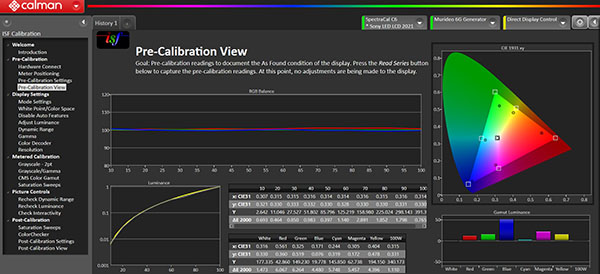
Pre-calibration view of the Bravia K-65XR90 with out-of-box settings showing excellent SDR color balance.
In real-world content viewing, both HDR10 and Dolby Vision HDR content was brilliantly bright and alive in natural looking color.
The 4K/HDR10 coral reef scenes from the Ultra HD Blu-ray disc of the BBC's Blue Planet II were bright and vibrant.
Colors of the blue, red, and magenta-hued reef fish were well saturated with natural-appearing brilliance, while the clarity of images took on depth cues that seemed three-dimensional.
Uniformity
The Sony Bravia Series 9 model we tested presented very good gray screen uniformity, with little dirty screen effect. We didn’t detect any static smearing standing out against moving backgrounds during camera pans from the BBC’s Blue Planet II UHD Blu-ray disc.
Black screen uniformity was only slightly lifted in areas of the screen, but this didn’t intrude into content in center screen viewing, and off-angle viewing was generally quite good off-angle for an LCD screen of this brightness level.
Trust The Processing
Sony handles motion processing a little differently than its competitors for excellent results.
The company does not participate in the use of the Ultra HD Alliance’s (UHDA) Filmmaker Mode as a picture mode selection. That industry standard picture mode, among other things, automatically shuts off motion processing to avoid the Soap Opera Effect that tends to disturb content creators for being overly sharp.
Sony instead applies its own motion processing algorithms for clearer colors and reduced judder in moving images, while preserving the look of film. The Bravia K-65XR90 takes full advantage of this.
In the opening sequence of the BBC’s Blue Planet II UHD Blu-ray disc, for example, the wrap around aerial shot of narrator Sir David Attenborough didn’t present any distracting judder in the bow railing on the deck of the moving ship on which he is standing.
This distracting artifact is sometimes evident when Filmmaker Mode is used in some competitors' models. At the same time, very little smearing of colors or edges were evident.
The K-65XR90 excels in preserving background low light details and film grain, maintaining a high level of clarity in these subtle aspects.
The opening night "Singapore" harbor scene in the Full HD Blu-ray Disc version of Pirates of the Caribbean: At World's End the low-light background noise is minimized without removing or smearing the look of natural film-grain.
The up-converted colors from the 1080p Full HD original source to the 2160p 4K screen come across with nearly as much naturally vibrant and sharp color detail as we would expect the native 4K sourced version would appear.
Sound
Sony Bravia 9 Theater Bar
The Bravia Series 9 TV has a built-in 70-Watt, 2.2.2-channel speaker system, with onboard support for Dolby Atmos and DTS immersive surround sound and will upscale stereo soundtracks for a wider-sounding overall effect.
In addition, a Bravia Acoustic Center Channel feature allows the set’s internal speakers to be switched to a dedicated center channel when connected to Sony's new flagship Bravia 9 Theater Bar or a compatible Sony ES AVR home theater system.
The onboard sound is highlighted by Acoustic Multi Audio+, which uses tweeters in the sides and top of the TV screen to generate expansive and naturally positioned sound.
However, the shallow cabinet depth tends to make the overall tone a bit boxy, particularly in dialogue.
But when paired with the optional 7.0.2-channel Bravia Theater 9 Bar model HT-A9000 ($1098) soundbar, SA-SW5 ($498) wireless subwoofer, and a pair of SA-SR5 ($498) wireless rear channel speakers, the immersive A/V experience and depth of sound are appreciably boosted.
The Bravia Acoustic Center Sync feature that switches the TV's onboard speaker array into a single center channel makes a significant difference in the full setup by filling out the effects from the front channels to present dialogue in a very clear, direct manner.
Unfortunately, the hollow tonal quality from the shallow TV speakers can still present a boxy quality that stands out somewhat against the rest of the speakers in the system.
To help fill out the room, a 360 Spatial Sound Mapping system processes the available physical speaker output to generate psycho-acoustic virtual channels known as phantom speakers that seem to emerge in between the physical drivers around the room.
This can be nicely calibrated by the internal circuitry for an optimized balance from the preferred seating spot.
The SA-SW5 wireless subwoofer we tested in this setup delivered punchy, dispersed, and well-balanced bass in both music and theatrical content.
In the system setup, we found the overall aural presentation to be very wide, clear, and multi-directional.
The overhead effects from Dolby Atmos soundtracks weren't always apparent listening in a room with 8-foot acoustic tiled ceilings, but the soundstage was always nicely wide and engaging.
Sound effects, like exploding bombs in the aerial attack scenes from the Blu-ray Disc version of Pearl Harbor, were delivered with realistic punch while the supporting SA-SR5 wireless speakers presented the sound of machine gun fire raining down around us.
Music was similarly clear and forceful in the hard-driving classic Hocus Pocus by Focus.
The bass output was well spread out within the overall presentation, making it hard to tell the sub was positioned on the floor right next to our listening position.
As mentioned, the Bravia 9 Theater Bar does not include either the SA-SR5 wireless speakers or the SA-SW5 subwoofer in a bundled package.
Where space and budget do not allow for all of the extra dynamics, we found the TV’s onboard speakers performed quite well at providing clear, understandable dialogue and engaging sound effects.
The TV’s Dolby Atmos and DTS virtual support widens the soundstage nicely. The set also supports IMAX Enhanced content with optimized DTS surround sound.
Anyone getting one of these TV models and seeking an integrated audio upgrade should seriously consider adding on the Bravia 9 Theater Bar, SA-SW5 subwoofer, and SA-SR5 wireless rear channel speakers for the full experience.
Conclusion
If you are looking for a bright, attractively styled 4K mini-LED TV, the Sony Bravia Series 9 (K-65XR90) is one of the most accurate televisions available in 2024 at handling both super bright specular highlights and dark shadow detail.
It doesn’t have as many LED dimming zones as some competitive models from Hisense and Samsung, but in real-world viewing, the Bravia Series 9 delivers one of the most natural-looking, highly bright images on the market.
Off-angle viewing and overall contrast performance isn’t quite to OLED standards, but it rates highly for most LCD TVs.
The panel uses QLED technology for nice color vibrancy and the P3 wide gamut coverage rated above the customary 90% of industry recommendations for a “premium” UHD TV.
To our tastes, the design is excellent, and the feature package is loaded with gaming and streaming options.
This might not be the best choice for bargain shoppers, but that’s not Sony’s target audience.
At $2998 on Amazon as this was written, we feel the features, integration, and performance benefits of the Sony Bravia Series 9 K-65XR90 offer a good value for discerning eyes and ears.
For perspective, it will cost $400 more than Samsung’s 2024 QN65QN90D ($1597.99), the 65-inch Hisense 65U8N ($997.99), and the TCL 65QM851G ($998).
You’ll have to decide if the image accuracy, excellent design styling, and Bravia home theater integration advantages make the best value for you.
Specs
You can find full features and specifications for the 65" XR90 Bravia Series 9 TV on Sony's official site.
- Log in or register to post comments


Okay, but how aggressive ABL(Automatic Brightness Limiting) does it have? How long will it hold a really bright scene before dimming itself?

Thanks for the detailed review of the Sony K-65XR90! It's impressive how technology enhances our viewing experiences, especially for movies and shows. If you're a fan of visual storytelling, you might also enjoy exploring manga. I recently launched a manga website https://jinxmangaonline.com/ that features a variety of series and recommendations—feel free to check it out for some great reads!

Interessante análise sobre o desempenho impressionante da nova TV Sony Bravia Series 9! Para quem busca uma experiência de entretenimento imersiva, recomendo dar uma olhada em https://mostbet-brl.bet/, onde encontrei uma interface bem otimizada e opções amplas de diversão. É uma plataforma ideal para aproveitar conteúdos online com qualidade e acessibilidade.

Esse review da Sony Bravia Series 9 de 65 polegadas traz uma excelente visão sobre a qualidade de imagem e som que o modelo oferece, principalmente para quem valoriza o cinema em casa. Mesmo com um preço elevado, a nitidez e os recursos avançados justificam o investimento para os amantes de alta definição. Falando em entretenimento e qualidade de experiência, outra maneira de explorar essas emoções intensas é em plataformas de apostas. Caso queira experimentar, recomendo conferir a https://22betpt.app para apostas dinâmicas e repletas de opções interessantes, proporcionando momentos emocionantes e muitas chances de vitória!

You can never go wrong with the The Bravia Series 9 TV, I have this one and it's amazing!

The Prime Calibrated Mode joins the similar Netflix Calibrated Mode that www.jacksonvillencdrywall.com has previously introduced for that streamer’s content.

Thanks for the detailed review of the Sony K-65XR90! It's impressive how technology enhances our viewing experiences, especially for movies and shows. If you're a fan of visual storytelling, you might also enjoy exploring manga. I recently launched a manga website https://aavotx.com/ that features a variety of series and recommendations—feel free to check it out for some great reads!

Stardew Valley is such an incredible game! It's a perfect blend of farming, adventure, and building relationships. The sense of accomplishment from growing crops, raising animals, and improving your farm is so rewarding. Plus, the characters and town have so much depth, making it a joy to get to know everyone. Whether I'm exploring caves or just tending to my crops, there's always something fun to do. Truly a game that lets you unwind and enjoy the little things in life! https://stardewdl.com/

WinPKR is a new online gaming platform in Pakistan. It enables people to play games and win real money. Players can pick from many types of games. Some games are simple and fun. Others need more skill to win. The platform is safe and easy to use. You can find games like puzzles and action games. Players can also join tournaments. In tournaments, they can compete with other players to win prizes. It is free to use with full entertainment and enjoyment winpkr withdraw.
Once you download it, you can make an account. After that, you can play games and join tournaments. The app also has leaderboards, which show the best players. This can motivate you to improve your skills. This game values fair play. The platform uses special technology to make sure games are fair. This means no cheating is allowed. Players can feel safe while playing. It also has a helpful customer support team. Whether you like playing alone or with friends, it has something for everyone.

Thanks for the detailed review of the Sony K-65XR90! It's impressive how technology enhances our viewing experiences, especially for movies and shows. If you're a fan of visual storytelling, you might also enjoy exploring manga. I recently launched a manga website https://bazartak.org/ that features a variety of series and recommendations—feel free to check it out for some great reads!

I'm very convinced to buy this LED TV because of my friend Miguel's recommendation! It's worth it. :)

Thank you for the thorough review of the Sony K-65XR90! It's amazing how technology continues to elevate our viewing experiences, particularly for movies and TV shows.
B9game.win

On https://earnstark.info/ you will discover how to make money, watch investment trends, and take advantage of educational resources to learn how to make money.

Thank you for sharing this review. driveway contractors

https://beetvapk.us/ Great TV nice information share i love this https://damanngames.com/


magis tv you can check also https://magistvoriginal.com/

flix vision tv show great tv show https://visionflix.net/

Sony Bravia will always be a relevant model when it comes to TV! Edmonton Basement Finishing

Excellent travail de publication d'un site Web aussi utile. Votre blog est non seulement utile mais aussi très créatif. traitement esthetique de la ligne de machoire

This review provides an excellent breakdown of the Sony K-65XR90 with detailed insights into its 4K Mini LED display, picture quality, and gaming performance. The contrast and brightness levels seem impressive, making it a great choice for movie lovers and gamers alike. The inclusion of Google TV and other smart features adds to its appeal. Definitely a solid pick for those looking for a premium viewing experience!
For those who enjoy online gaming, check out https://playdaman.com for exciting games and rewards!

This article provide very usefull infomation for playing game and start earning using daman game follow this website
https://damansgame.com/

for downalod game and play using our platform we provide all information
https://damansgame.com/





